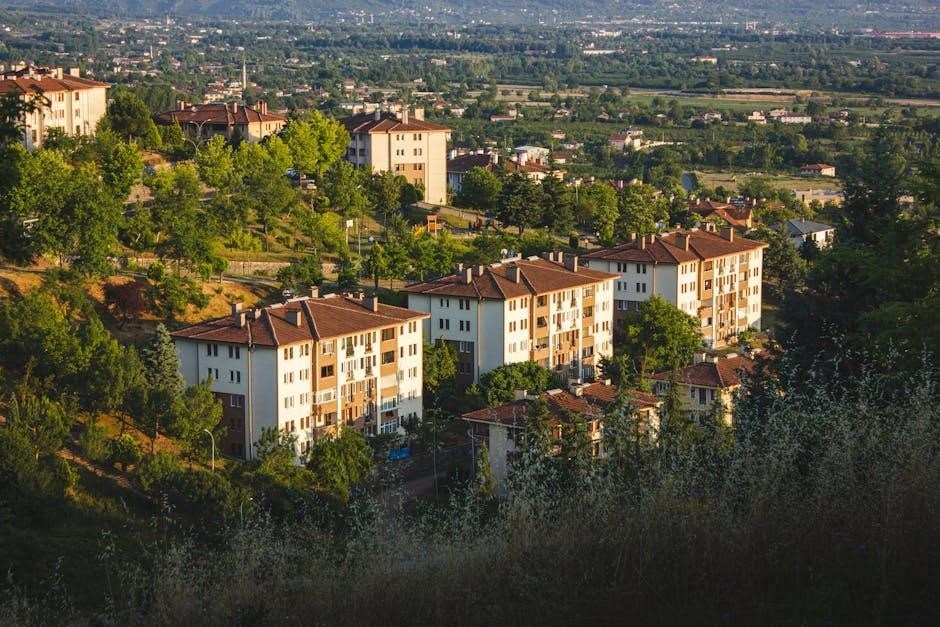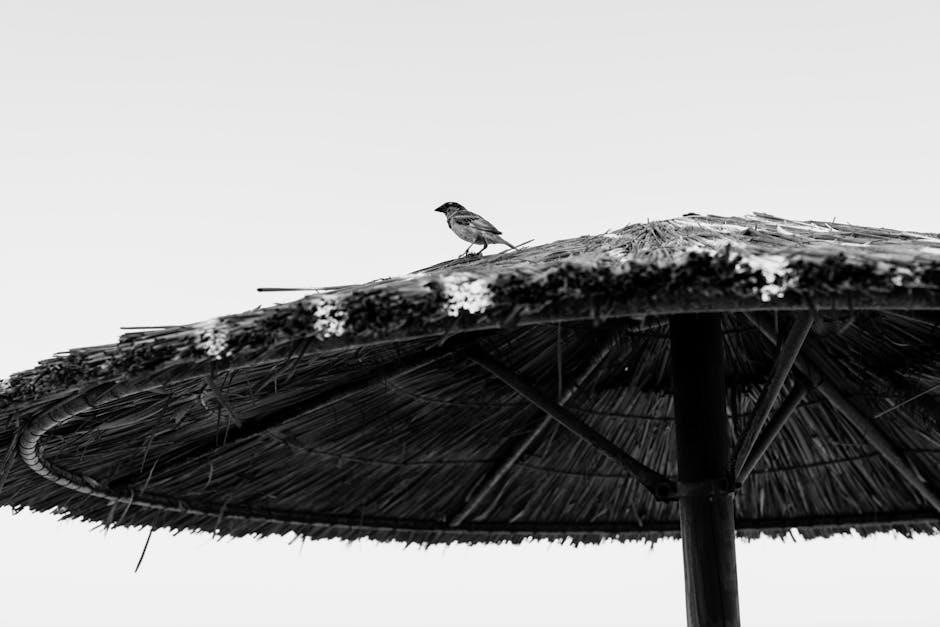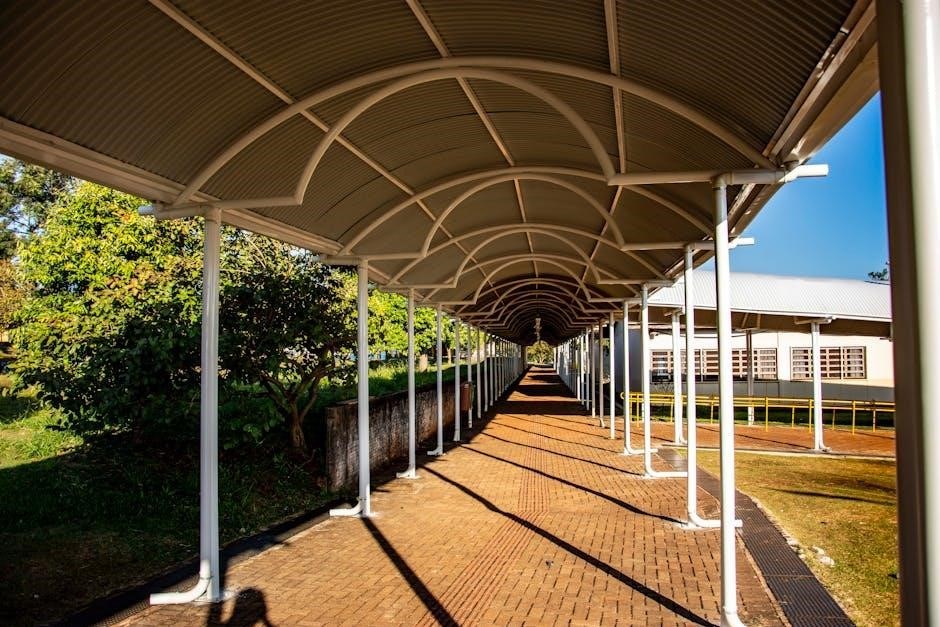fiddler on the roof pdf script
The Fiddler on the Roof PDF script is widely available online, offering insights into its rich narrative, memorable characters, and iconic songs for fans and scholars. The story, set in early 20th-century Russia, explores themes of tradition, family, and cultural identity through the life of Tevye, a Jewish milkman. The script provides a detailed look at the musical’s structure, including key scenes like the Prologue and “Tradition,” as well as its historical and cultural significance. It remains a beloved resource for theater enthusiasts and educators alike.
1.1 Overview of the Musical
Fiddler on the Roof is a beloved musical adaptation of Sholem Aleichem’s stories, set in the early 20th-century Jewish village of Anatevka. The story follows Tevye, a poor milkman, as he navigates life’s challenges while maintaining his faith and traditions. The musical explores themes of family, marriage, and cultural identity, blending humor and pathos with iconic songs like “Tradition” and “If I Were a Rich Man.” Its universal appeal has made it a timeless classic, resonating with audiences worldwide since its 1964 Broadway premiere.
1.2 Historical Context and Setting
Fiddler on the Roof is set in Anatevka, a small Jewish village in Tsarist Russia during the early 20th century. The story unfolds against the backdrop of political upheaval and social change, reflecting the struggles of Jewish communities under oppressive rule. The musical captures the traditions and customs of shtetl life, while also addressing the challenges of poverty, religious persecution, and the impending revolution of 1905. This historical context provides a vivid backdrop for Tevye’s journey, blending cultural authenticity with universal themes of survival and resilience.
1.3 Cultural Significance of the Story
Fiddler on the Roof holds profound cultural significance as a poignant portrayal of Jewish life, traditions, and identity. The story resonates with universal themes of family, faith, and resilience, while preserving the unique heritage of Eastern European Jewry. Its exploration of cultural identity and survival has made it a landmark in Jewish representation in theater. The musical bridges generational gaps, offering a relatable narrative that transcends cultural boundaries, making it a timeless and globally cherished production. Its impact continues to inspire audiences and scholars in understanding Jewish history and tradition.

Background of the Musical
Fiddler on the Roof is a musical adaptation of Sholem Aleichem’s stories, premiering in 1964. Created by Joseph Stein, Sheldon Harnick, and Jerry Bock, it became a cultural phenomenon, blending tradition and modernity through its storytelling and music. The musical explores themes of identity, family, and resilience, resonating with audiences worldwide. Its success led to numerous productions and adaptations, cementing its legacy in theater history. The PDF script provides a detailed look at its origins and evolution, offering insights into its enduring appeal.
2.1 Original Source Material: Sholem Aleichem’s Stories
The Fiddler on the Roof musical is rooted in Sholem Aleichem’s short stories, particularly those featuring Tevye, a milkman navigating life in a small Jewish village. Aleichem’s tales, written in Yiddish, capture the essence of traditional Jewish life, family dynamics, and societal challenges. The musical adaptation draws heavily from these stories, incorporating key characters like Tevye, Golde, and their daughters. The PDF script reflects Aleichem’s original narratives, blending humor, pathos, and cultural depth. His work provides the emotional and thematic foundation for the musical, ensuring its authenticity and resonance with audiences.
2.2 Adaptation into a Musical
The adaptation of Sholem Aleichem’s stories into Fiddler on the Roof was a collaborative effort by Joseph Stein, Jerry Bock, and Sheldon Harnick. Stein’s script transformed the tales into a cohesive narrative, blending humor and drama. Bock’s music and Harnick’s lyrics brought the story to life, creating iconic songs like “If I Were a Rich Man” and “Sunrise, Sunset.” The musical premiered in 1964, becoming a groundbreaking production that bridged cultural divides. Its adaptation not only honored Aleichem’s original work but also elevated it into a timeless theatrical masterpiece, resonating with audiences worldwide.
2.3 Premiere and Reception in 1964
Fiddler on the Roof premiered on September 22, 1964, at the Imperial Theatre in New York, starring Zero Mostel as Tevye. Directed by Jerome Robbins and choreographed by Robbins, the musical became an instant success. It ran for 3,242 performances, a testament to its enduring appeal. Critics praised its rich storytelling, memorable songs, and cultural depth. The production won nine Tony Awards, solidifying its place in Broadway history. Its 1964 debut marked a milestone in theater, blending tradition with modernity and resonating with audiences from diverse backgrounds.

The “Fiddler on the Roof” Script
The Fiddler on the Roof PDF script is widely accessible online, featuring iconic scenes, dialogues, and songs like “Tradition” and “If I Were a Rich Man.” It offers a detailed narrative of Tevye’s journey, blending humor and pathos, and is a valuable resource for theater enthusiasts and scholars studying the musical’s structure and themes.
3.1 Availability of the PDF Script Online
The Fiddler on the Roof PDF script is widely available online through platforms like Script Fly, Script City, and Script-O-Rama. These websites offer access to various versions of the script, including revised editions and transcripts. The document provides a detailed narrative, featuring iconic scenes, dialogues, and songs such as “Tradition” and “If I Were a Rich Man.” Fans and scholars can easily download or read the PDF script to explore its rich storytelling and cultural significance. However, availability may vary due to copyright restrictions or outdated links.
3.2 Key Scenes and Dialogues
The Fiddler on the Roof PDF script highlights iconic scenes like the Prologue, where Tevye introduces the village of Anatevka, and the “Tradition” opening. Dialogues such as Tevye’s negotiations with the matchmaker Yente and his emotional confrontations with his daughters are central. The “Dream” sequence and the wedding of Motel and Tzeitel showcase humor and cultural richness. These scenes, filled with humor and pathos, illustrate the struggles of maintaining tradition amid change, making the script a powerful exploration of family, faith, and identity.
3.3 Structure of the Script: Acts and Scenes
The Fiddler on the Roof PDF script is divided into two acts, each containing pivotal scenes that drive the narrative. Act 1 opens with the Prologue, introducing Tevye and the village of Anatevka. Key scenes include “Tradition,” the matchmaker Yente’s visit, and the iconic “Dream” sequence. Act 2 explores the daughters’ marriages and the community’s expulsion, culminating in the bittersweet departure from Anatevka. The script’s structure balances humor and emotional depth, with scenes like the wedding of Motel and Tzeitel and the family’s farewell showcasing its dramatic and cultural richness.

Key Elements of the Script
The prologue introduces the theme of tradition, central to the story. Major characters include Tevye, Golde, and their family, driving the plot. Iconic songs enhance emotional depth and cultural themes.
4.1 Prologue and the Theme of Tradition
The prologue introduces Tevye, a Jewish milkman, who compares his village’s life to a fiddler on the roof, symbolizing precarious balance. Tradition is central, guiding daily routines, from religious practices to family life. Tevye explains how traditions, though sometimes burdensome, provide stability. The script highlights the importance of cultural heritage in Anatevka, emphasizing community cohesion. This opening sets the tone for exploring tradition’s role in navigating change and preserving identity, making it a cornerstone of the narrative.
4.2 Major Characters: Tevye, Golde, and Their Family
Tevye, the charismatic milkman, is the heart of the story, known for his wit and philosophical conversations with God. His wife, Golde, is practical and strong-willed, balancing tradition with familial needs. Their daughters—Tzeitel, Hodel, Chava, Shprintze, and Bielke—each embody distinct personalities, navigating marriage and independence. The family’s dynamics illustrate the tensions between tradition and modernity, as they face societal changes and personal aspirations. Together, they create a rich tapestry of love, humor, and resilience, central to the narrative’s emotional depth and cultural exploration.
4.3 Iconic Songs and Their Role in the Narrative
The Fiddler on the Roof script features iconic songs that drive the narrative and deepen character development. “To Life” celebrates community and resilience, while “Sunrise, Sunset” reflects on the passage of time. “Do You Love Me?” showcases the heartfelt connection between Tevye and Golde. “Matchmaker” highlights the daughters’ aspirations, and “Anatevka” serves as a poignant farewell to their homeland. These songs, woven into the story, enhance emotional depth and thematic exploration, making the musical a timeless blend of music, drama, and cultural heritage.

Themes in “Fiddler on the Roof”
Themes of tradition, family, and cultural identity resonate throughout the story, reflecting the struggles and resilience of Tevye’s community in a changing world.
5.1 Tradition and Its Importance
Tradition is the cornerstone of Tevye’s life, shaping his decisions and interactions. The Fiddler on the Roof PDF script highlights how tradition binds the community, offering stability amid uncertainty. Tevye frequently invokes tradition, as seen in his iconic line, “Without our traditions, our lives would be as shaky as a fiddler on the roof.” This theme is central to the narrative, influencing everything from family practices to societal expectations. The script explores how tradition both unites and challenges the characters, reflecting the tension between preserving heritage and adapting to change.
5.2 Family, Marriage, and Matchmaking
Family, marriage, and matchmaking are central to the narrative of Fiddler on the Roof. The script portrays Tevye’s loving yet often humorous relationship with his wife Golde and their daughters. Matchmaking, traditionally overseen by Yente, is a pivotal theme, reflecting the community’s customs. However, the daughters challenge these traditions by asserting their own choices in marriage, creating tension between personal desire and societal expectations. This dynamic explores the balance between honoring cultural practices and embracing change, making family and marriage a rich source of both conflict and warmth in the story.
5.3 Cultural Identity and Survival
Cultural identity and survival are deeply explored in Fiddler on the Roof. The script highlights the Jewish community’s struggle to preserve traditions amid Tsarist Russia’s oppressive regime. Through Tevye’s storytelling and the community’s rituals, the musical underscores the importance of cultural heritage in maintaining identity. The characters’ resilience and adaptability in the face of persecution and displacement serve as a testament to the enduring strength of their traditions. The script vividly portrays how cultural practices, such as music and storytelling, become tools for survival and continuity in a rapidly changing world.
The Fiddler as a Symbol
The fiddler symbolizes the Jewish community’s precarious balance between tradition and survival. Perched on the roof, he represents resilience, adapting to life’s challenges while maintaining cultural identity and hope.
6.1 Interpretation of the Fiddler Character
The Fiddler is a metaphor for the Jewish community’s struggle to balance tradition and survival. He symbolizes resilience, playing his tune precariously on the roof, reflecting the fragility of cultural identity. His music represents joy and hope amidst adversity, embodying the community’s spirit. The character serves as a unifying force, highlighting themes of faith and adaptability. Through his presence, the script underscores the universal human quest to preserve heritage while navigating an ever-changing world. His iconic role makes him a powerful symbol of enduring cultural identity and communal strength.
6.2 The Roof as a Metaphor
The roof in Fiddler on the Roof serves as a powerful metaphor for the fragile balance between tradition and modernity. It symbolizes the precarious existence of Tevye’s family and their community, teetering between cultural preservation and the forces of change. The roof represents the thin line between stability and upheaval, as the characters navigate religious, social, and political challenges. Its imagery evokes the fragility of life and the constant effort to maintain equilibrium in a world undergoing transformation. This metaphor resonates deeply, highlighting the universal human struggle to adapt while holding onto cherished traditions and identities.
6.3 The Fiddler’s Role in the Story
The Fiddler in Fiddler on the Roof symbolizes the delicate balance between tradition and change. Appearing at pivotal moments, such as the daughters’ weddings, the Fiddler’s music reflects the joy and fragility of the community’s way of life. His presence underscores the themes of resilience and cultural preservation, serving as a silent observer to the challenges faced by Tevye and his family. The Fiddler’s role is both symbolic and deeply emotional, embodying the community’s struggle to maintain their identity amidst external pressures. His presence ties together the narrative’s exploration of tradition, faith, and survival.
Production and Staging
The Fiddler on the Roof script highlights Robbins’ choreography, orchestration by Don Walker, and vibrant stage designs, creating an immersive experience that brings Anatevka to life with rich cultural authenticity.
7.1 Stage Design and Costumes
The stage design for Fiddler on the Roof features earthy tones and traditional Jewish village elements, such as the synagogue, Tevye’s humble home, and the vibrant marketplace. Costumes reflect the characters’ cultural heritage, with intricate details like embroidered fabrics and head coverings. The wardrobe highlights social status, with richer colors for celebration scenes and simpler attire for daily life. The set and costumes work together to create an authentic early 20th-century Anatevka, immersing the audience in the story’s rich cultural and historical context.
7.2 Choreography and Dance Sequences
The choreography in Fiddler on the Roof is integral to its storytelling, blending traditional Jewish folk dances with vibrant, expressive movements. The iconic “Bottle Dance” from Tzeitel’s wedding showcases precision and cultural heritage. Other key sequences, like the lively “To Life” and the emotional “Miracle of Miracles,” highlight the characters’ joy and resilience. The dances not only enhance the narrative but also reflect the community’s traditions and struggles, making the musical a visually captivating experience that complements its powerful story and memorable songs.
7.3 Musical Arrangements and Orchestration
The musical arrangements in Fiddler on the Roof are masterfully composed by Jerry Bock, with lyrics by Sheldon Harnick, blending traditional Jewish folk melodies with vibrant orchestration. The score features iconic songs like “To Life” and “Sunrise, Sunset,” which are emotionally resonant and deeply rooted in cultural heritage. The orchestration often incorporates klezmer-style instrumentation, such as violins and clarinets, to evoke the spirit of the Jewish shtetl. These arrangements not only enhance the storytelling but also provide a rich, nostalgic soundtrack that has become timeless in its appeal.
Script Analysis
The Fiddler on the Roof script masterfully balances humor and pathos, exploring themes of tradition, family, and cultural identity through Tevye’s narrative. Its dramatic conflicts and moral dilemmas resonate deeply, offering timeless insights into human struggle and resilience.
8.1 Dramatic Conflicts and Their Resolution
The Fiddler on the Roof script revolves around Tevye’s internal and external conflicts, primarily his struggle to maintain tradition amidst changing societal norms. His daughters’ decisions to marry for love challenge his adherence to traditional matchmaking, creating emotional tension. The resolution of these conflicts often involves Tevye’s compromising, such as accepting Motel and Perchik, while drawing the line at Chava’s marriage to a non-Jew. This balance of tradition and modernity underscores the script’s exploration of cultural identity and survival, ultimately leading to the family’s exile from Anatevka. The narrative masterfully blends humor with poignant resolution, highlighting universal human dilemmas.
8.2 Humor and Pathos in the Script
The Fiddler on the Roof script masterfully blends humor and emotional depth, creating a compelling narrative. Tevye’s witty dialogue and philosophical musings provide comedic relief, while his struggles with tradition and family evoke pathos. Scenes like the “Do You Love Me?” exchange between Tevye and Golde showcase lighthearted humor, contrasting with poignant moments such as Chava’s estrangement and the village’s exile. This balance of humor and pathos makes the story relatable and emotionally resonant, highlighting the universality of human experiences amidst cultural and personal challenges.
8.3 Moral and Ethical Dilemmas
The Fiddler on the Roof script explores profound moral and ethical dilemmas, particularly through Tevye’s struggles with tradition and modernity. His daughters’ marriages challenge Jewish customs, forcing Tevye to confront his faith and familial love. Chava’s marriage to Fyedka, a non-Jew, presents a deeply ethical conflict, testing Tevye’s ability to reconcile tradition with personal morality. These dilemmas reflect universal human struggles, making the story timeless and emotionally resonant. The script’s portrayal of these conflicts underscores the complexity of balancing cultural identity with personal values.
Cultural Impact of the Musical
The musical has had a significant cultural impact, influencing Jewish representation in media, achieving global popularity through various adaptations, and leaving a lasting legacy in theater.
9.1 Influence on Jewish Cultural Representation
The musical Fiddler on the Roof has profoundly influenced Jewish cultural representation, offering an authentic portrayal of traditions, family dynamics, and the struggles of Jewish identity. By adapting Sholem Aleichem’s stories, it brought Jewish heritage to global audiences, breaking stereotypes and fostering understanding. Its themes of resilience and cultural preservation have resonated widely, making it a cornerstone of Jewish representation in theater and media. The script’s exploration of these elements has enriched cultural dialogue, ensuring its enduring relevance in modern storytelling.
9.2 Global Popularity and Adaptations
Fiddler on the Roof has achieved global acclaim, transcending cultural borders through its universal themes of tradition, family, and resilience. The musical premiered on Broadway in 1964 and was later adapted into a successful film in 1971. Its script has been translated into multiple languages, with productions staged worldwide, including in countries like Israel, France, and Japan. The availability of the Fiddler on the Roof PDF script online has further facilitated its global reach, enabling diverse adaptations while maintaining the essence of the original story and its enduring appeal.
9.3 Legacy in Modern Theater
Fiddler on the Roof remains a cornerstone of modern theater, influencing countless productions with its timeless themes of tradition, family, and cultural identity. Its PDF script continues to inspire new adaptations, ensuring its relevance in contemporary storytelling. The musical’s rich narrative and iconic songs have shaped theatrical storytelling, while its exploration of universal human struggles resonates with diverse audiences. Its enduring legacy is evident in frequent revivals and adaptations, solidifying its place as a classic in global theater history, and its script remains a vital resource for both performers and educators.

Educational Use of the Script
The Fiddler on the Roof PDF script is widely used in schools for teaching drama, literature, and cultural studies, offering insights into themes, characters, and historical context.
It supports theater workshops and classroom discussions, making it a valuable educational resource for analyzing Jewish heritage and universal human experiences.
10.1 Teaching the Script in Schools
The Fiddler on the Roof PDF script is a valuable educational tool for teaching drama, literature, and cultural studies. Schools use it to explore themes like tradition, family, and identity, aligning with curriculum goals. The script’s historical context, set in early 20th-century Russia, provides insights into Jewish heritage and societal challenges. Students analyze key scenes, dialogues, and songs to understand storytelling and character development. Its availability as a PDF makes it accessible for classroom discussions and theater workshops, fostering engagement with the musical’s universal themes and cultural significance.
10.2 Analyzing Themes and Characters in Class
The Fiddler on the Roof PDF script provides rich material for analyzing themes and characters in educational settings. Students explore universal themes like tradition, family, and cultural identity through Tevye’s journey. Character studies focus on Tevye’s resilience, Golde’s strength, and the daughters’ independence. Classroom discussions delve into how these characters navigate societal changes and personal dilemmas. The script’s dialogue and songs, such as “Tradition” and “Sunrise, Sunset,” offer insights into the characters’ motivations and emotions, making it a valuable tool for teaching literary and dramatic analysis.
10.3 Using the Script for Theater Workshops
The Fiddler on the Roof PDF script is an invaluable resource for theater workshops, offering practical material for scene analysis, character development, and performance techniques. Participants can explore iconic scenes, such as the Prologue and “Tradition,” to understand storytelling and dialogue delivery. The script’s structure, including acts and scenes, provides a clear framework for breaking down and rehearsing complex sequences. Additionally, the musical’s iconic songs and dialogues serve as excellent exercises for vocal and acting workshops, helping participants craft compelling performances while staying true to the story’s emotional depth.
The Fiddler on the Roof PDF script remains a timeless resource, offering insights into tradition, family, and cultural identity. Its availability ensures continued relevance for theater enthusiasts and scholars.
11.1 Summary of Key Points
The Fiddler on the Roof PDF script is a valuable resource for exploring the musical’s narrative, characters, and themes. Set in early 20th-century Russia, it follows Tevye, a Jewish milkman, as he navigates tradition, family, and cultural identity. The script highlights iconic scenes like the Prologue and “Tradition,” offering insights into the story’s historical and cultural significance. It also provides a detailed structure of acts and scenes, making it an essential tool for analyzing the musical’s themes and its enduring impact on theater and Jewish cultural representation.
11.2 Final Thoughts on the Script’s Value
The Fiddler on the Roof PDF script is a timeless resource that offers profound insights into the musical’s themes, characters, and cultural significance. Its availability online makes it accessible for scholars, educators, and theater enthusiasts to explore the nuances of the story and its historical context. The script’s detailed structure and iconic dialogues provide a rich foundation for analysis and performance. It remains a cherished tool for understanding the intersection of tradition, family, and identity, ensuring its enduring value in both educational and theatrical settings.


